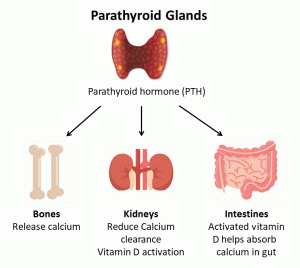Insights into Parathyroid Disorders: Causes, Diagnosis, and Management Strategies
Understanding Parathyroid Disorders
Parathyroid disorders encompass a range of conditions affecting the parathyroid glands, crucial for regulating calcium levels in the body. These small glands, located near the thyroid gland in the neck, play a pivotal role in maintaining calcium balance through the secretion of parathyroid hormone (PTH). When this balance is disrupted, various disorders can arise, impacting overall health and wellbeing.

Types and Causes of Parathyroid Disorders
Primary Hyperparathyroidism
Primary hyperparathyroidism is the most common disorder, typically caused by a benign tumor on one of the parathyroid glands, leading to excessive PTH secretion. This overproduction disrupts calcium regulation, often resulting in elevated calcium levels in the blood (hypercalcemia).
Secondary Hyperparathyroidism
Secondary hyperparathyroidism develops as a response to low calcium levels in the blood, often due to chronic kidney disease or vitamin D deficiency. The parathyroid glands become overactive in an attempt to restore calcium balance, which can lead to complications if not managed effectively.
Hypoparathyroidism
Hypoparathyroidism occurs when the parathyroid glands produce insufficient PTH, causing low levels of calcium in the blood (hypocalcemia). This deficiency can be congenital or acquired, often as a result of surgery involving the thyroid or parathyroid glands.
Diagnosis of Parathyroid Disorders
Clinical Evaluation
Diagnosing parathyroid disorders begins with a thorough clinical evaluation, including a detailed medical history and physical examination. Symptoms such as fatigue, weakness, kidney stones, and bone pain may prompt further investigation.
Laboratory Tests
Laboratory tests play a crucial role in confirming a diagnosis. Blood tests measure calcium and PTH levels, with elevated calcium and PTH often indicative of primary hyperparathyroidism. In secondary hyperparathyroidism, tests may reveal low calcium and high PTH levels.
Imaging Studies
Imaging studies such as ultrasound, CT scans, or nuclear medicine scans (Sestamibi scan) are valuable in locating abnormal parathyroid glands, especially in cases where surgery is being considered for treatment.
Management Strategies for Parathyroid Disorders
Primary Hyperparathyroidism Management
Management of primary hyperparathyroidism depends on factors such as the severity of symptoms, calcium levels, and overall health. Surgical removal of the abnormal parathyroid gland (parathyroidectomy) is often recommended if symptoms are severe or if complications such as kidney stones or osteoporosis have developed.
Secondary Hyperparathyroidism Management
Managing secondary hyperparathyroidism involves addressing the underlying cause, such as treating kidney disease or correcting vitamin D deficiency. Medications may be used to lower PTH levels and manage calcium levels effectively.
Hypoparathyroidism Management
Management of hypoparathyroidism focuses on restoring calcium and vitamin D levels through oral supplements. Regular monitoring of calcium levels is essential to prevent complications such as seizures or heart rhythm disturbances.
Conclusion
In conclusion, parathyroid disorders significantly impact calcium regulation in the body, affecting various organ systems and overall health. Early diagnosis through clinical evaluation and laboratory tests is crucial for timely intervention and management. Treatment strategies vary depending on the type and severity of the disorder, ranging from surgical options for primary hyperparathyroidism to medical management for secondary and hypoparathyroidism.
For individuals experiencing symptoms related to parathyroid disorders, seeking prompt medical attention and proper management can greatly improve quality of life and prevent long-term complications.